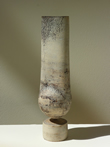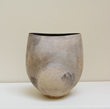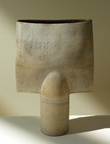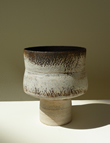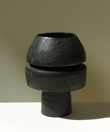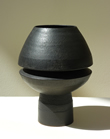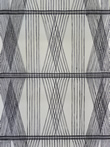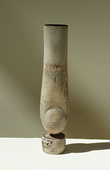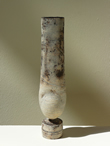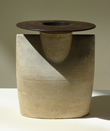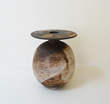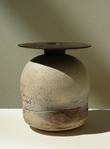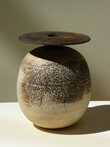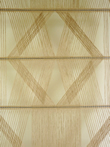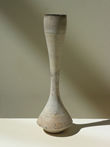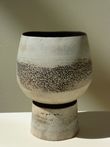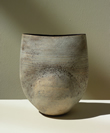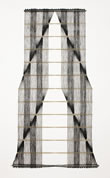PETER COLLINGWOOD - HANS COPER
3 June - 1 July 2009
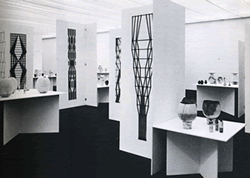
An exhibition of five 'Macrogauze' hangings by Peter Collingwood (1922-2008) and nineteen ceramic works, many never exhibited before, by Hans Coper (1920-1981). The show marks the 40th anniversary of their joint exhibition at the Victoria & Albert Museum, London in 1969.
Please email us for prices and availability
Left: 'Coper Collingwood' exhibition at the Victoria & Albert Museum, London, 1969. Reproduced with kind permission of Tony Birks.
In 1957 Peter Collingwood and Hans Coper were two of the first three artists invited to join Digswell Arts Trust which aims to link artists and the community. It also, at that time, provided inexpensive living and working accommodation for artists and craftspeople. They both spent some five or six years there, participating in Digswell exhibitions but never working collaboratively. One of the objectives of the Trust was to bring residents into contact with architects and other potential patrons. In this way Collingwood gained commissions for wall hangings in the Shell building and in New Zealand House, much larger works than he had created previously. Hans Coper became even more involved with architecture, producing ceramic discs for a wall installation in a Rotherham school and a London office, tiles for cladding buildings and acoustic bricks. Most surprisingly he also designed washbasins which, Collingwood joked, were signed H and C on the taps.
There are no obvious influences from each other in their work of the time but what they had in common was a work ethos and a belief in the integrity of their work and the material from which it was made. Coper never viewed himself as a sculptor nor did Collingwood see himself as an artist.
Coper and Collingwood were brought together again in 1968 by Hugh Wakefield of the Victoria and Albert Museum. Initially Collingwood had been approached about a one person retrospective and was understandably reluctant when the idea of a joint exhibition with a potter was raised. However the name Hans Coper overcame this unwillingness and the now famous 1969 exhibition came about. It was a major innovation for the museum to mount an exhibition of the work of living craftspeople and was also notable for consisting of work made during the twelve months prior to its opening. This did create some conflict with the museum as both artists wanted their work to be on sale and had to threaten to withdraw in order to persuade the museum authorities to agree to this.
The introductions each artist wrote for the catalogue both refer to the means by which they created. Collingwood - “ ... the hand loom is a highly developed precision instrument. Its products bear little evidence of the actual manual operations of the weaver, only of his decisions as to material, colour and form.” Coper - “My concern is with extracting essence rather than with experiment and exploration. The wheel imposes its economy, dictates limits, provides momentum and continuity.” The wheel is, however, a much speedier means of production and in order to make his work economically viable Collingwood had invented new methods which were not only quicker to weave but which also challenged the linearity of the process. The innovation for which he is best known is the macrogauze in which the warp threads move obliquely across the weaving. These were not inventions for inventions sake. He wrote “The design must so incorporate the technique’s peculiarities that the one could not be imagined to exist without the other”.
Peter Collingwood designed some 230 different macrogauzes and wove them to order, one 270 times. Initially they may seem quiet and unassuming but slowly their geometric patterns work their way into one’s mind. They are all, with one exception, woven in linen. “I like the look of linen – by its nature it hangs in a straight line which when the hanging is against the wall gives me the look of a graphic design in black ink which I like”. The vast majority use only black and natural thread but the subtle interplay between the two is an important part of their appeal. Some are three dimensional, an ingenious use of steel rods enables sections of the weaving to stand out from the rest, but even in the two dimensional ones an illusion of a third dimension springs from the geometry.
Hans Coper died prematurely in 1981 but Peter Collingwood continued to explore textile techniques until he collapsed and died in his workshop last October. They will both be remembered as two of the most important British artists, in their fields, of the twentieth century.
Roger Hardwick and Claude Delmas



